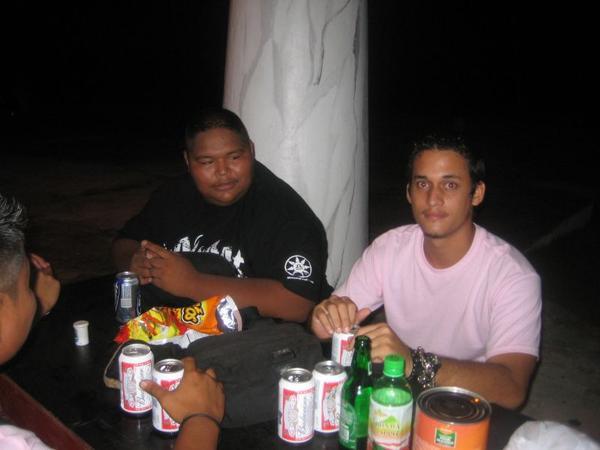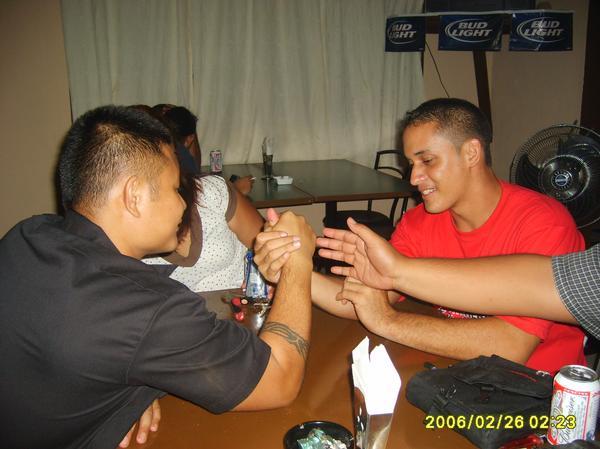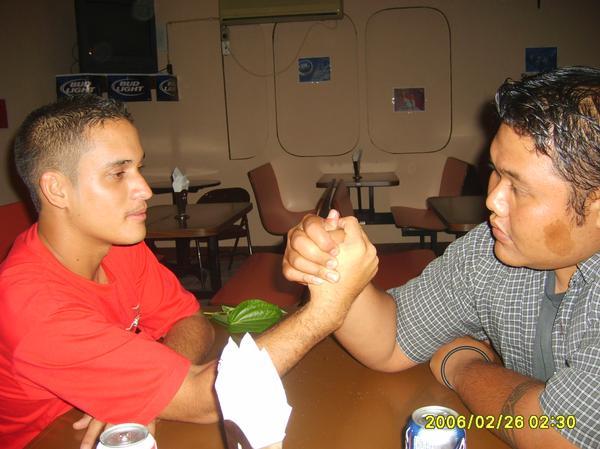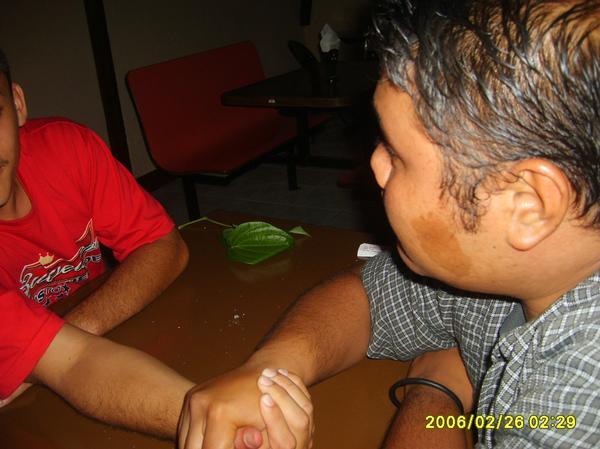 animal cell are forms of eukaryotic cells which make up many tissues in animals. they actually have small vacuoles. Due to the lack of a rigid cell wall, animal cells can adopt a variety of shapes.
animal cell are forms of eukaryotic cells which make up many tissues in animals. they actually have small vacuoles. Due to the lack of a rigid cell wall, animal cells can adopt a variety of shapes.
Post your answer the questions below:
1. What are ribosomes?
2. does an animal cell contain a cell wall?
3. Where are where ribosomes constructed?
Tuesday, September 25, 2007
Animal Cells
Posted by
Bruce
at
1:27 AM
1 comments
![]()
Tuesday, September 18, 2007
"Chicken Soup for the Beer Drinkers Soul"
" ......Sometimes when I reflect back on all the beer I drink I feel ashamed. Then I look into the glass and think about the workers in the brewery and all of their hopes and dreams. If I didn't drink this beer, they might be out of work and their dreams would be shattered. Then I say to myself, "It is better that I drink this beer and let their dreams come true than be selfish and worry about my liver! "
Posted by
Bruce
at
9:09 PM
0
comments
![]()
Monday, September 17, 2007
Currents Of Our World!
 Earths Main Currents
Earths Main Currents
Posted by
Bruce
at
11:02 PM
0
comments
![]()
Tuesday, September 11, 2007
Sour Food
Introduction
What makes food sour? Foods become sour when they receive a high concentration of loose hydrogen atoms. Atoms are tiny particles that make up just about everything we see. They also link to make molecules. Different food have different taste, and every taste has its own amount of hydrogen atoms.
Hypothesis
In this experiment, I will see which foods are most sour.
Materials
The materials I used in the experiment were five different foods, (Lemon juice, vinegar, orange juice, milk, and water), five regular plastic (clear) cups, five bottles, 5 blank food labels, a pen, a cup of dye, and a microscope.
Procedures
First, I emptied each of the five foods into five bottles and labeled each bottle by numbers one to five. Next, I lined up the empty cups right in front of them. Then, I poured five drops of each food from the bottles in each of the empty cups. After that, I identified the cups of what foods I implemented by numbering them matching that to their number bottle they came from. Then, I added a drop of dye to each of the cups. Doing so, each of the foods in the cups changed colors. Next I used a microscope to look into each of the cups too see the hydrogen atoms. Finally I rearranged each cup into in order of highest concentration of loose hydrogen to its lowest.
Data

An illustration of the foods in different numbered cups.
Results
During the dye procedure, I noticed the colors of the foods changed. Looking through the microscope (magnified millions of times), I saw each food’s estimated quantity of hydrogen atoms. Here I found out the most to least sour foods. Most sour was the lemon juice, followed by vinegar, orange juice, milk, and the least was water. The reason why these foods resulted in that order is because of their high concentration. That means the higher amount loose hydrogen atoms with high concentration, the more sour.
Explanation
1. What are acids and bases?
· Acids are basically substances that donate protons (hydrogen ions, H+) to bases. An acid also produces H30+ when dissolved in water. Basis is the substances that accept the protons from the acids. They also produce
2. What is a molecule?
· A molecule is a combination of two or more atoms.
3. Why is pH important in the ocean?
· pH is important in the ocean because aquatic life needs it. The lower the pH (which can be caused by metals) can be more toxic because they are more soluble.
Posted by
Bruce
at
1:49 AM
0
comments
![]()
Holes in Bread
Introduction
Have you ever noticed the holes in bread? If you look at some bread really closely, you will find holes in it. A molecule actually makes these holes. Molecules are tiny particles that make everything around us. How do these molecules make the holes in bread?
Hypothesis
In this experiment, I will see what really makes these
Materials
The materials I used in the experiment were a clear (science) tube, spoon, a small cup of yeast, a small cup of sugar, a glass of warm water, a Popsicle stick, timer and flashlight.
Procedures
First, using the spoon, I added three scoops of yeast into the science tube. Second, I added three scoops of sugar to the tube. (Yeast is an ingredient of bread, and sugar is food for yeast). Then carefully, I filled the tube but only to make it three fourths of warm water. After, I start and continued to stir the ingredients together using a Popsicle stick until the water turns the same color as the yeast. (I used a timer, but it isn’t necessary). Next, when the same color revealed itself, I took the flashlight and shine almost directly (very closely) to the tube. Finally, you should be able to see the bubbles.
Data

An illustration of what would be going on in the tube if you were using a microscope.
Results
Molecules are tiny particles that make everything around us. One of the ingredients for making bread is yeast. Yeast is a living thing that feeds on the sugar molecules. It breaks the sugar molecules apart into new molecules. Sugar is food for the yeast. The reaction in the tube took a little time but turn out successful. When I looked closely with a flashlight, it revealed the bubbles which bubbled up the tube. It looked as if it was boiling. When the sugar molecules broke up, it became carbon dioxide gas molecules (and alcohol molecules). These carbon dioxide gas molecules were the cause of the bubbles I saw in the tube and also bread. The chemical reaction also in the tube also happens with bread. When yeast is added to bread dough, it breaks apart the sugar molecules in flour. When the carbon dioxide gas bubbles are trapped in the bread dough, it leaves holes when the bread is baked.
Explanation
Holes in Bread:
1. What gas causes the bubbles?
- Carbon dioxide gas molecules make tiny bubbles
2. How was the gas produced? - The bubbles are made by a chemical reaction. Yeast is a living thing, so when the yeast feeds on the sugar molecues, it breaks them apart into carbon dioxide molecues and then the carbon dioxide molecues make the gas bubbles.
3. How does CO2 get in the ocean? - The ocean absorbs CO2 from the atmosphere, but it’s a very long process. The oceans also holds most of the carbon because CO2 more soluble in water than a lot of different gases.
Posted by
Bruce
at
1:48 AM
0
comments
![]()


















